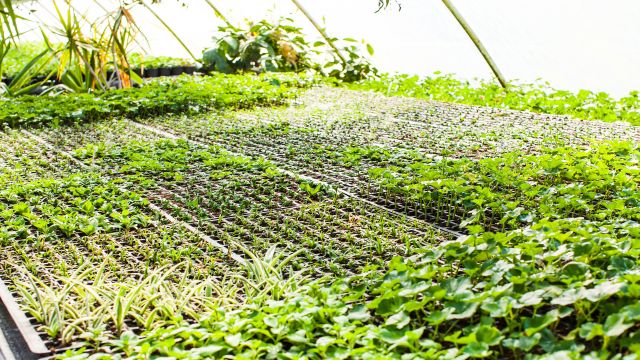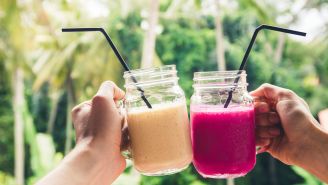You’d think finding fresh produce in a tropical island paradise would be cheap and easy. But with the majority of Hawaii’s produce being shipped in, groceries can often be expensive and poor quality. Luckily our perennially warm weather lends itself to ideal growing conditions for a delectable cornucopia in your own backyard.
Starting your own garden doesn’t have to take a ton of time, space and energy. Even a small lanai or windowsill can generate usable greens to add flavor and nutrients to your meal. We spoke with Caretaker Luigi “Gigi” Cocquio from Hoa ‘Aina O Makaha and ‘Aina in Schools Program Coordinator Joe Wat from the Kokua Hawaii Foundation to learn some tips about how to start your own home garden.
Cast a wide net to start
Within Hawaii, it can feel like there’s different microclimate every three feet. Hawaii Island alone has desert, rainforest and snowy peaks that all host vastly different growing conditions. Each island’s unique ahupuaa may foster different plants based on rainfall, sunlight and soil. To account for that, Wat recommends this to new gardeners: “Experiment, talk to other people in your community, find out what works for you.”
Wat goes on to explain that what grows in one area of the island might not fare well even a few miles away due to different growing conditions. New gardeners should experiment by trying lots of different plants to see what grows best in their area. To get a sense of what might work in your own yard, you can talk to neighbors with gardens and try the same plants. Visit a local farmer’s market and talk to growers about what plants have or have not worked well for them.
It’s also a good idea to try to grow plants that tend to do well in hot climates. “Instead of growing lettuce, you might try and grow bok choy or you might want to try something that's a little more heat tolerant,” explains Wat.
Some plants that tend to do well in Hawaii include:
- Chard
- Kale
- Eggplant
- Tomatoes
- Cherry Tomatoes
- Basil
- Tatsoi
- Sweet Potato
- Pumpkins
- Kabocha
Anyone can grow food
Many people have tried and failed to grow a plant. Don’t let that discourage you from trying again. Cocquio has this to say to people who claim to be incapable of gardening: “I really don't believe that. Because you know, to me, taking care of a plant is really taking care of ourselves and other people.”
To that end, Cocquio hosts free container garden workshops at Hoa ‘Aina O Makaha to teach people how to start their own home gardens. Participants are given containers, soil and either seeds or seedlings to get started. Over the course of three seminars, they learn general gardening strategies, how to fertilize plants and make organic pesticides, and ways to incorporate the food grown into healthy recipes.
If heading out to Waianae for three garden seminars isn’t an option, consider volunteering in the ‘Aina in Schools program where you’ll help keiki in school gardens and pick up some skills along the way. You can also look into various community gardens scattered throughout the islands.
Health benefits of gardening
Aside from the bounty of fresh food a garden can grow, the act of gardening can also be beneficial to your health. Gardening is a light form of exercise that is suitable for most ability levels. It can also be meditative and many get a mood boost from the activity. Being outdoors can also increase your vitamin D levels which may have positive health benefits. While outside gardening, protect your skin with sunscreen and light layers.
Practical tips to get started
Aside from workshops and volunteering, here are some things to keep in mind when starting your own garden:
- Always water plants, even if it rains. “If it rains on me, I still like to drink water,” says Wat. “I still think it's important that the plants are afforded that also.”
- It’s okay to repurpose buckets, tubs or even old drawers to use as planters. Just be sure they have proper drainage and use a light layer of gravel at the bottom so the soil doesn’t wash out when watering plants.
- If you use compost with potted plants, mix compost with potting soil for best results.
- Check seed packets for root depth. If you aren’t planting in the ground, this will help you to determine the size of the pot or container you’ll need. It’s possible to grow several plants that have different root depths in the same container.
- Thoroughly wash all garden produce before consumption, especially if you have slugs or snails in your yard. Snails may carry rat lungworm disease and can spread the parasite to your plants, although that is very rare. Cooking or freezing produce will kill the parasite, while washing plants under running water will remove parasites from raw veggies.





